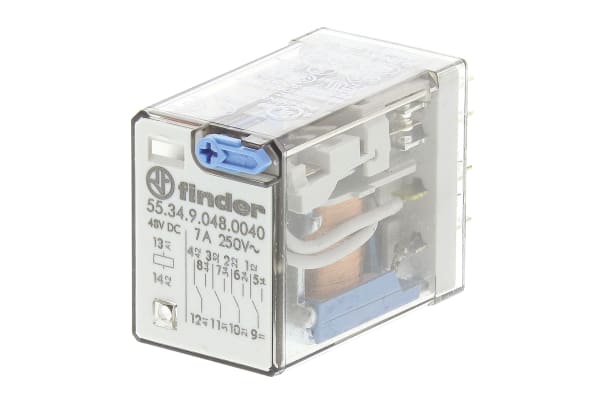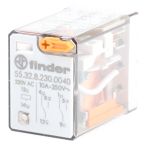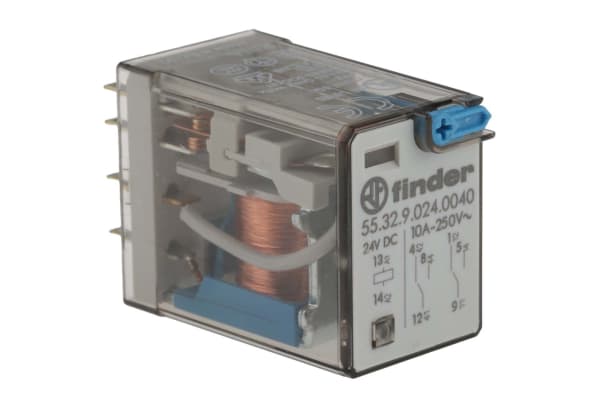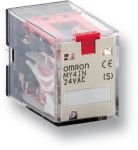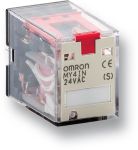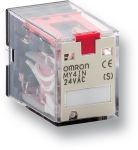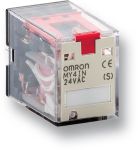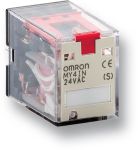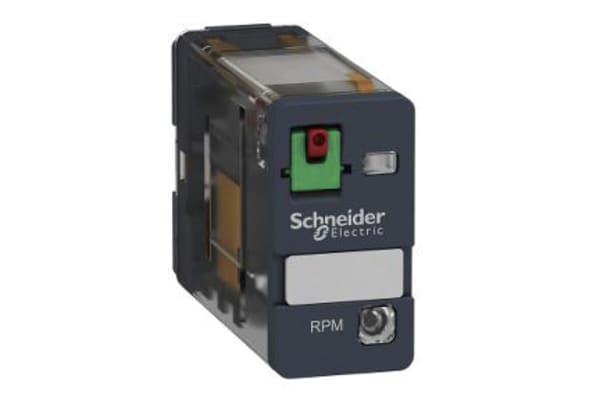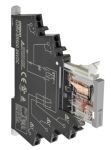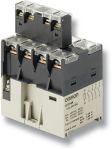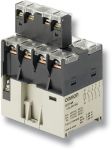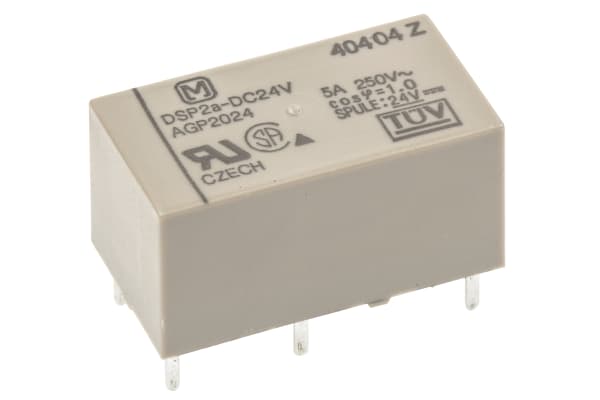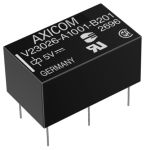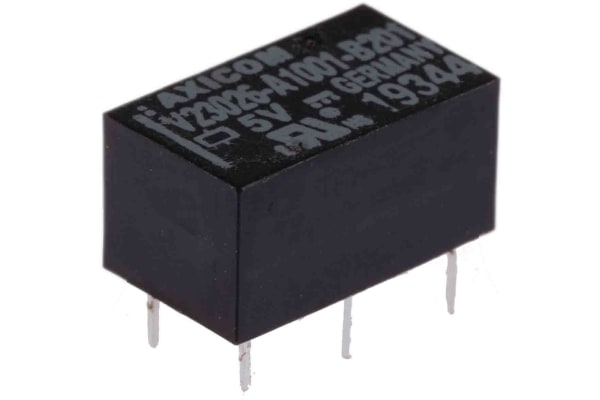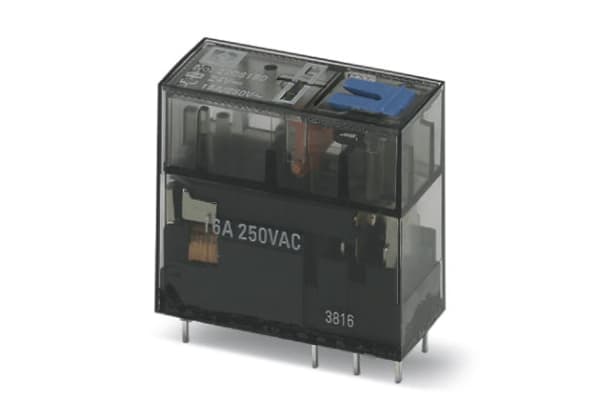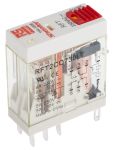Non-Latching Relays
Relays are electrical switches that are operated by electrical impulses with the primary function to open and close a circuit, they can also be referred to as industrial switches. There are 2 main types available, latching and non–latching relays.How do non-latching relays work?Non-latching relays are in a normally closed (NC) position and will stay in this state without power. When power passes through the circuit, the relay switched to a normally open (NO) position by using an internal coil to generate a magnetic force, holding this NO position. Once the current is turned off, it returns to the NC position. This makes non-latching relays well suited to push-button applications like keyboards and micro-controller input buttons.What are non-latching relays used for?Non-latching relays are highly durable and versatile components, making their performance long lasting and suitable for use in a wide range of applications, such as:Automotive enginesHousehold appliancesIndustrial machineryMedical equipmentTelecommunications equipmentWhat is the difference between latching and non-latching relays?Both types of relays in similar in design and function, however, a significant difference between them is that a latching relay will remain in the last position it when it was last powered, whereas a non-latching goes back to its normal position. This makes each more type of relay suitable for different applications. Considerations when selecting a relayWhen choosing a relay, it is important to consider a number of specifications to ensure it is fit for purpose, some factors include:Coil voltage – the required voltage to actuate the switching mechanism. If a voltage is too high this could damage the components, if it is too low then it will not actuate. Contact configuration – This is the state the contacts are in without power. For example SPST, single pole single throw.Contact material – the relay contacts are available in many materials that have certain properties. Common materials are gold, silver, tin oxide and nickel Coil power – the amount of power (watts) the coil operates at. This must match the power in the circuit for correct function. Coil resistance – the amount of resistance (ohms) in the circuit that the coil creates.
-
TE Connectivity, 12V dc Coil Non-Latching Relay SPDT, 12A Switching Current PCB Mount Single Pole, RT114012
IDR63,668.23 -
Finder, 48V dc Coil Non-Latching Relay 4PDT, 7A Switching Current Plug In, 4 Pole, 55.34.9.048.0040
IDR185,130.85 -
Finder, 230V ac Coil Non-Latching Relay DPDT, 10A Switching Current Plug In, 2 Pole, 55.32.8.230.0040
IDR202,437.70 -
Finder, 24V dc Coil Non-Latching Relay DPDT, 10A Switching Current Plug In, 2 Pole, 55.32.9.024.0040
IDR184,921.07 -
Finder, 12V dc Coil Non-Latching Relay DPDT, 10A Switching Current Plug In, 2 Pole, 55.32.9.012.0040
IDR164,362.63 -
Omron, 24V dc Coil Non-Latching Relay 4PDT, 3A Switching Current Plug In, 4 Pole, MY4N-GS 24VDC
IDR192,158.48 -
Omron, 110/120V ac Coil Non-Latching Relay 4PDT, 3A Switching Current Plug In, 4 Pole, MY4IN-GS 110/120VAC
IDR191,843.81 -
Omron, 24V dc Coil Non-Latching Relay DPDT, 5A Switching Current Plug In, 2 Pole, MY2N-GS 24VDC
IDR184,291.73 -
Omron, 24V dc Coil Non-Latching Relay DPDT, 5A Switching Current Plug In, 2 Pole, MY2IN-GS 24VDC
IDR75,835.47 -
Omron, 220/240V ac Coil Non-Latching Relay DPDT, 5A Switching Current Plug In, 2 Pole, MY2-GS 220/240VAC
IDR85,275.57 -
Omron, 110/120V ac Coil Non-Latching Relay DPDT, 5A Switching Current Plug In, 2 Pole, MY2-GS 110/120VAC
IDR130,588.05 -
Schneider Electric, 230V ac Coil Non-Latching Relay DPDT, 15 A @ 250 V ac, 15 A @ 28 V dc Switching Current, 2 Pole,
IDR214,500.05 -
-22.50%
Schneider Electric, 230V ac Coil Non-Latching Relay SPDT, 15 A @ 250 V ac, 15 A @ 28 V dc Switching Current Single
IDR137,091.23IDR113,910.54 -
Omron, 12V dc Coil Non-Latching Relay SPDT, 6A Switching Current DIN Rail Single Pole, G2RV-SR700 12VDC
IDR309,845.06 -
Omron, 24V dc Coil Non-Latching Relay, 40 (AC) A, 5 (DC) A Switching Current Chassis Mount, 4 Pole, G7Z-4A-20Z-R 24VDC
IDR1,195,431.33 -
Omron, 24V dc Coil Non-Latching Relay, 25 (NC A @ AC), 40 (NO A @ AC), 5 (DC) A Switching Current Chassis Mount, 3
IDR1,092,429.35 -
Panasonic DPNO Non-Latching Relay PCB Mount, 24V dc Coil, 5 A
IDR67,654.05 -
TE Connectivity, 24V dc Coil Non-Latching Relay SPDT, 5A Switching Current PCB Mount Single Pole, V23057-B0006-A101
IDR435,922.84 -
TE Connectivity, 6V dc Coil Non-Latching Relay SPDT, 5A Switching Current PCB Mount Single Pole, V23057B1A101
IDR279,636.74 -
TE Connectivity, 24V dc Coil Non-Latching Relay SPDT, 1A Switching Current PCB Mount Single Pole, V23026A1004B201
IDR269,462.41 -
TE Connectivity, 5V dc Coil Non-Latching Relay SPDT, 1A Switching Current PCB Mount Single Pole, V23026A1001B201
IDR153,978.52 -
TE Connectivity, 24V dc Coil Non-Latching Relay SPNO, 30A Switching Current PCB Mount Single Pole, T9AS1D12-24
IDR69,961.63 -
Phoenix Contact, 24V dc Coil Non-Latching Relay SPDT, 10mA Switching Current Single Pole, 2908180
IDR93,561.88 -
RS PRO, 230V ac Coil Non-Latching Relay DPDT, 8A Switching Current Plug In, 2 Pole
IDR172,124.49




